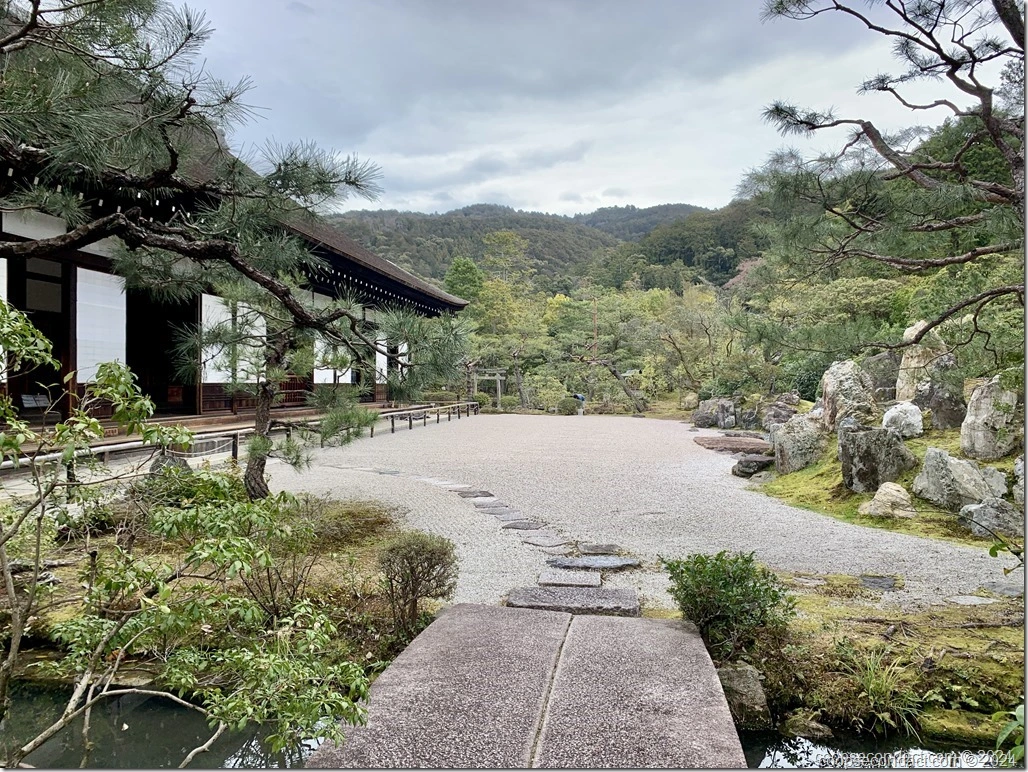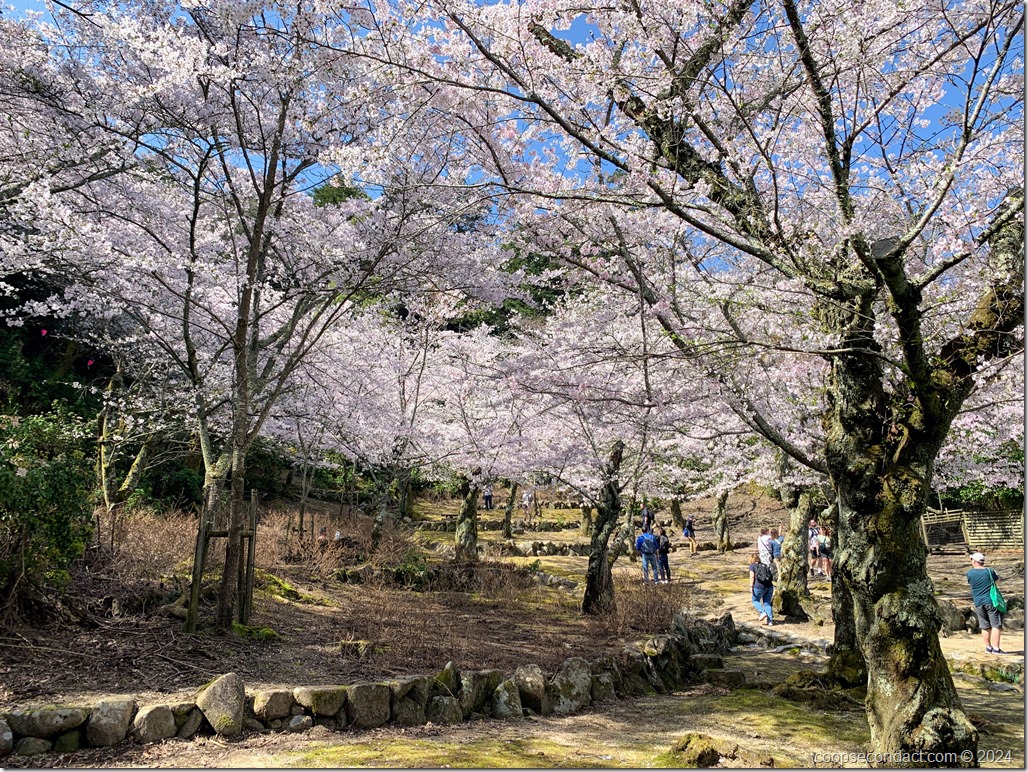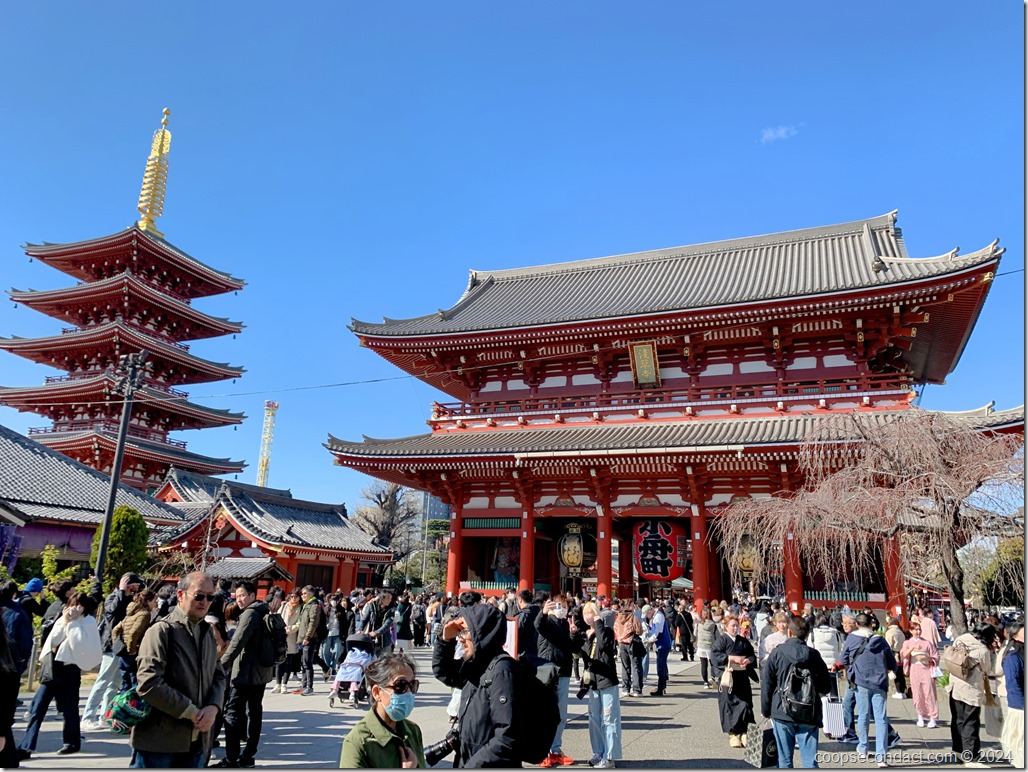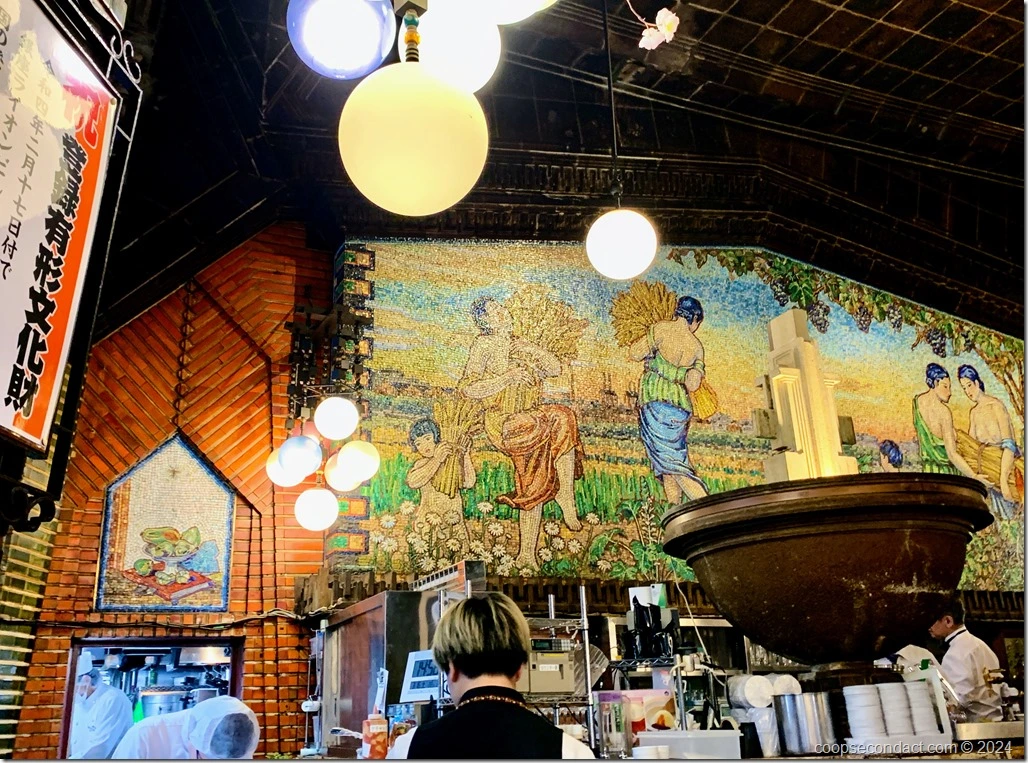(Click here for more photographs.)
Certainly, one of the important aspects of our trip to Japan has been the food. Of course, Valerie has had many Japanese dishes during her life, either prepared by her mother or from other sources in Southern California. But having them in Japan was an important part of our trip. We’ve enjoyed a variety of sushi, sashimi, ramen, yakisoba, takoyaki, mochi, okonomiyaki, gobo, Japanese curry, and even a taste of Japan’s famous Wagyu beef.
But the highlight of our food journey was to experience the Japanese kaiseki, which is a traditional Japanese multi-course meal that sometimes is referred to Japanese haute cuisine.
In the present day, kaiseki is a type of art form that balances the taste, texture, appearance, and colors of food. To this end, only fresh seasonal ingredients are used and are prepared in ways that aim to enhance their flavor. Local ingredients are often included as well. Finished dishes are carefully presented on plates that are chosen to enhance both the appearance and the seasonal theme of the meal. Dishes are beautifully arranged and garnished, often with real leaves and flowers, as well as edible garnishes designed to resemble natural plants and animals. With the help of the hotel staff, we got a reservation for kaiseki in Kyoto at Hanasaki Nishikiten.
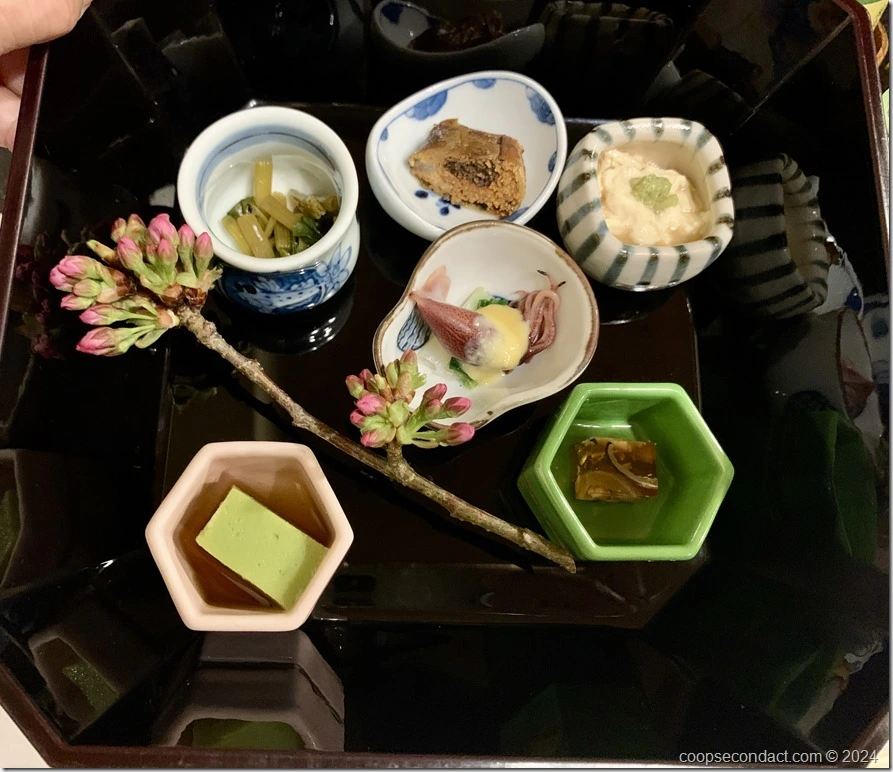 Continue reading →
Continue reading →
